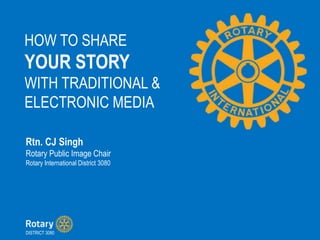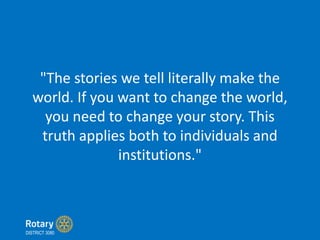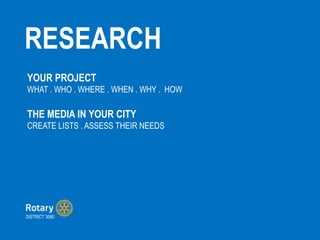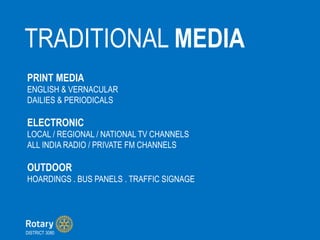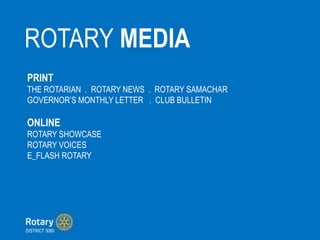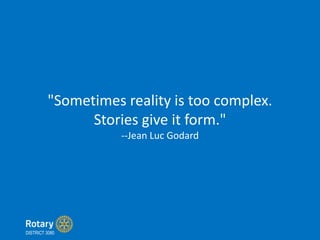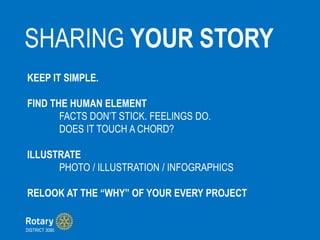How to Tell Your Story to Media
- 1. HOW TO SHARE YOUR STORY WITH TRADITIONAL & ELECTRONIC MEDIA Rtn. CJ Singh Rotary Public Image Chair Rotary International District 3080 DISTRICT 3080
- 2. "The stories we tell literally make the world. If you want to change the world, you need to change your story. This truth applies both to individuals and institutions." DISTRICT 3080
- 3. RESEARCH DISTRICT 3080 YOUR PROJECT WHAT . WHO . WHERE . WHEN . WHY . HOW THE MEDIA IN YOUR CITY CREATE LISTS . ASSESS THEIR NEEDS
- 4. TRADITIONAL MEDIA DISTRICT 3080 PRINT MEDIA ENGLISH & VERNACULAR DAILIES & PERIODICALS ELECTRONIC LOCAL / REGIONAL / NATIONAL TV CHANNELS ALL INDIA RADIO / PRIVATE FM CHANNELS OUTDOOR HOARDINGS . BUS PANELS . TRAFFIC SIGNAGE
- 5. ONLINE MEDIA DISTRICT 3080 YOUR CHANNELS WEBSITE . BLOG . YOUTUBE . TWITTER . LINKEDIN . FACEBOOK . INSTAGRAM . EMAILERS SHARING TUMBLER . DIGG . FB PAGES
- 6. ROTARY MEDIA DISTRICT 3080 PRINT THE ROTARIAN . ROTARY NEWS . ROTARY SAMACHAR GOVERNORĄŊS MONTHLY LETTER . CLUB BULLETIN ONLINE ROTARY SHOWCASE ROTARY VOICES E_FLASH ROTARY
- 7. "Sometimes reality is too complex. Stories give it form." --Jean Luc Godard DISTRICT 3080
- 8. SHARING YOUR STORY DISTRICT 3080 KEEP IT SIMPLE. FIND THE HUMAN ELEMENT FACTS DONĄŊT STICK. FEELINGS DO. DOES IT TOUCH A CHORD? ILLUSTRATE PHOTO / ILLUSTRATION / INFOGRAPHICS RELOOK AT THE Ą°WHYĄą OF YOUR EVERY PROJECT

